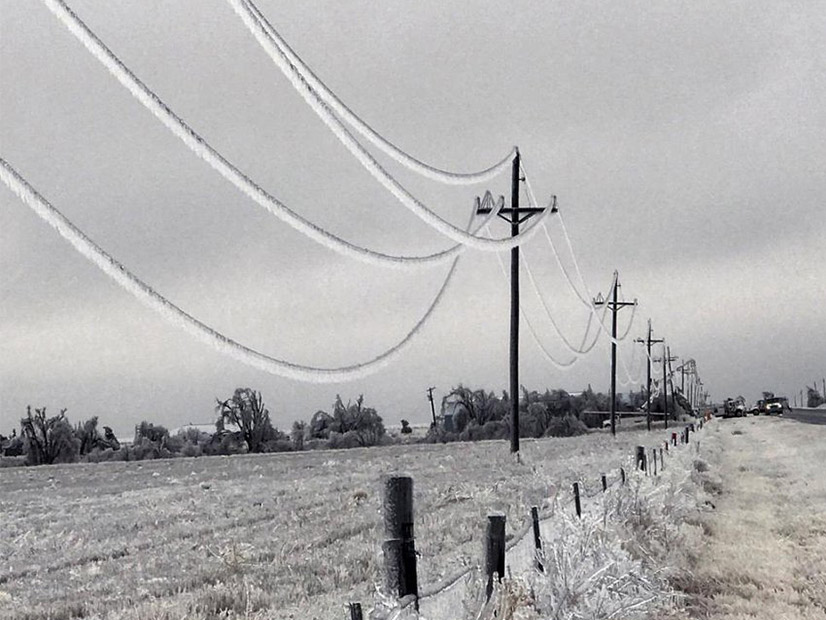Cold weather preparedness loomed large over this year’s NAES-NERC Conference, with panelists taking time during the event this week to discuss the implementation of the ERO’s recently approved cold weather standards despite their enforceability being more than a year away.
The three-day conference was sponsored by NAES, an engineering firm that helps generators, transmission owners and others comply with NERC’s reliability standards. The theme for this year’s virtual event was “Guiding Compliance: Improving Reliability.”
Events of this year lent a special urgency to the discussions, as presenters returned repeatedly to the winter storms of February that caused massive outages in Texas and the Midwest. (See ERCOT: Grid was ‘Seconds and Minutes’ from Total Collapse.)
“We had people [in Texas] that were not experienced in freeze protection, cold weather operation measures or anything like that when temperatures get that cold,” said Richard Schlottmann, senior NERC reliability specialist at NAES. “And that led to significant damage in broken piping systems that froze … which then in turn caused scheduled delays and increased costs for repairs to systems and equipment. It was one of those things where if you’ve been in it, you take it for granted, [but] you have to realize that what seems common sense to you is not really common in areas that don’t experience those things.”
The Texas freeze didn’t lead directly to NERC’s new cold weather standards, which began development in 2019, but it did prompt the organization to accelerate the project’s development in March. (See NERC Cold Weather Team to Seek Faster Finish.) NERC’s Board of Trustees approved the new standards — EOP-011-2 (Emergency preparedness and operations), IRO-010-4 (Reliability coordinator data specification and collection) and TOP-003-5 (Operational reliability data) — clearing the way for submission to FERC for approval. (See NERC Board OKs Cold Weather Standards.)
Urban Pushes Preparedness Plans
Although the new standards will not take effect for 18 months after FERC accepts them, Don Urban — principal analyst at ReliabilityFirst who served on the standard drafting team for the cold weather project — urged utilities to become familiar with their requirements so as not be caught flat footed when they do become enforceable. Urban’s presentation focused on EOP-011-2, which requires responsible entities to develop plans “to mitigate operating emergencies.”
Reviewing the “core elements” mandated by the new standard, Urban noted that the requirements for weatherization procedures are relatively broad. The standard allows utilities a degree of freedom in implementing plans that work for them, whether they are part of a standard seasonal checklist or a “totally separate procedure” applying to oncoming cold weather situations.
“I’m not a big fan of checklists,” Urban joked. “We had one entity [that] had so many checks it was unbelievable, and thank God I wasn’t the one making the rounds to check those things off. But we’re seeing some pretty comprehensive checklists; whatever works out there, that’s what you do.”
Though it was not part of the standard, Urban also advised that utilities establish a list of critical equipment and instrumentation, explaining that knowing ahead of time which equipment is most essential could help utilities to direct resources in an emergency. He also emphasized the importance of establishing an accurate idea of the conditions that facilities are able to tolerate.
“It’s surprising … there’s some facilities that still don’t know what their minimum design temperature is, or the [balancing authority] is not aware of that,” Urban said. “So we have all these options here to determine what was best for the facility; pick one of those, make sure it’s an accurate temperature and provide it to your BA.”
Urban’s presentation focused mainly on the risks to thermal generating facilities, leading some participants to question the new standard’s applicability to hydroelectric generation. In response Urban acknowledged the omission but said the team had decided to focus its efforts where it saw the biggest challenge at the moment.
“We’ve been fortunate hydro hasn’t been a problem so far,” Urban said. “We tried to target the generation that has higher risk in our footprint right now, but I think we’re going to reassess that … and maybe hydro will be rolled into the next go-around.”



